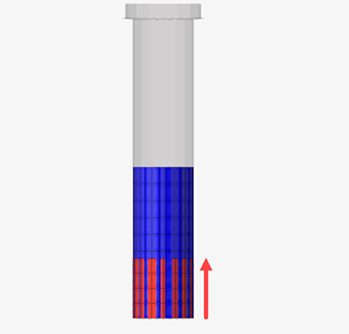Solid
Realization Details
- Solid Type
-
Figure 1. Pattern 1: Tapered Bolt 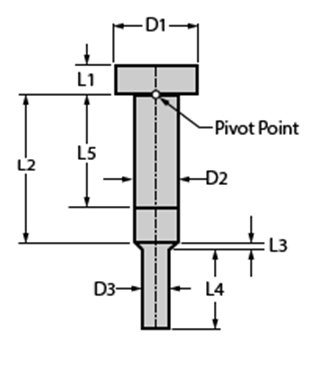
Figure 2. Pattern 2: Tapered Bolt with Washer 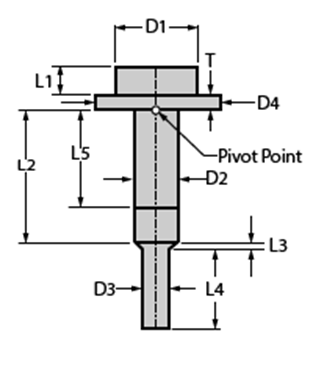
Figure 3. Pattern 3: Straight Bolt 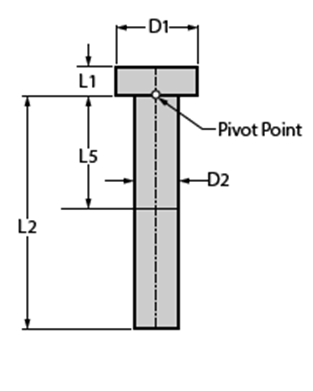
Figure 4. Pattern 4: Straight Bolt with Washer 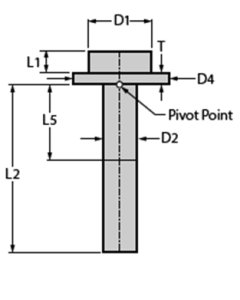
Figure 5. Pattern 5: Double Sided Bolt 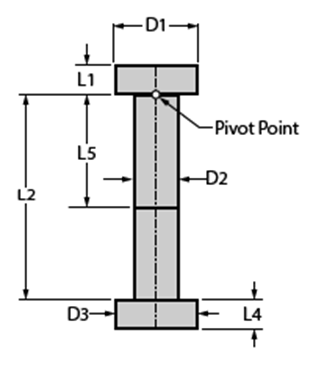
- D1
- Diameter of the bolt head
- D2
-
- Input
- A manually defined diameter of the bolt shaft
- Auto
- The connector will automatically take the diameter of the smallest hole and set it as the diameter of the bolt shaft.
- D3 (Patterns 1, 2, and 5 Only)
- The diameter of the tapered section of the bolt (pattern 1 and 2), or the diameter of the double-sided bolt (pattern 5)
- D4 (Patterns 2 and 4 Only)
- Diameter of the washer
- L1
- Length of the bolt head, excludes the thickness of the washer
- L2
- Length of the main section of the shaft of the bolt
- L3
- Transition zone between the tapered section of the shaft of the bolt and the main shaft of the bolt
- L4 (Patterns 1 and 2 Only)
- The length of the tapered section of the bolt (patterns 1 and 2), or the length of the double-sided bolt (pattern 5)
- L5
- The position of the pretension section
- T (Patterns 2 and 4 Only)
- The thickness of the washer
- Mesh Type
- Use this option to change between a Hex or a Tet Mesh for the bolt.
- Mesh Size
- Use this option to define the mesh size down the length of the bolt.
- Pretension
- An optional parameter that will create a pretension section
- Failure (LS-DYNA Only)
- This will create a layer of elements under the head of the bolt with
hour glassing and a rupture material so the failure of the bolt can be
modeled.
Figure 6. 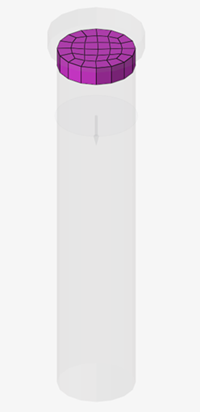
- Rupture Material
- An optional selector that can be used to define an existing material for the failure elements. If left empty, a new material will be created for the realization.
Contact
Contact is created for all solver profiles automatically.
- Explicit Solver Interfaces
- For explicit solver interfaces (LS-DYNA and
Radioss), there are no contact options.
The entire bolt and links are placed into a contact set. The shaft of
the bolt is tied into the last link.
Figure 7. 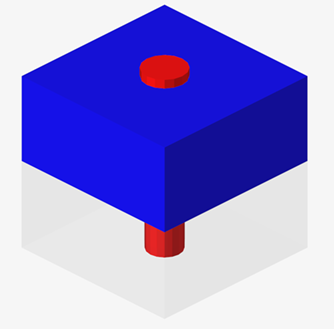
Figure 8. 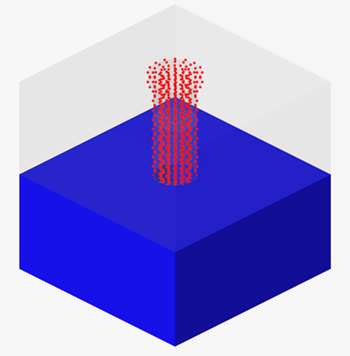
- Implicit Solver Interfaces
- For the Implicit solver interfaces (OptiStruct and Abaqus), under the head of the bolt
is modeled separately as a contact.
Figure 9. 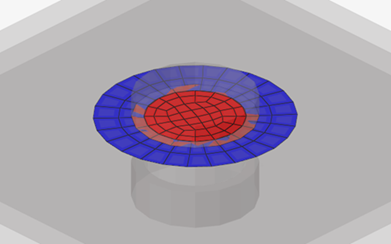
- Shaft Contact Type: (OptiStruct/Abaqus Only)
-
- Tied
- A tied contact is created for the shaft of the bolt and the
last link of the connector.
Figure 10. 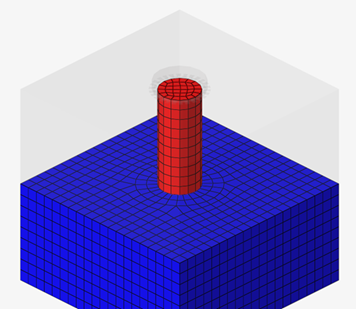
- Threaded (Solid Links Only)
-
- Last Part
- A contact patch will be created between the
inner face of the solid hole and the face of the
bolt shaft.
Figure 11. 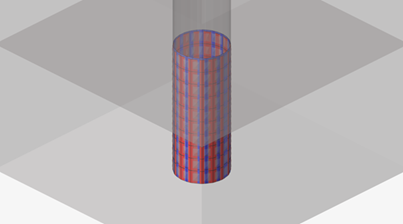
- Contact Length
- Measured from the bottom of the bolt, the
contact thread on the bolt will be the specified
thread length.
Figure 12. 